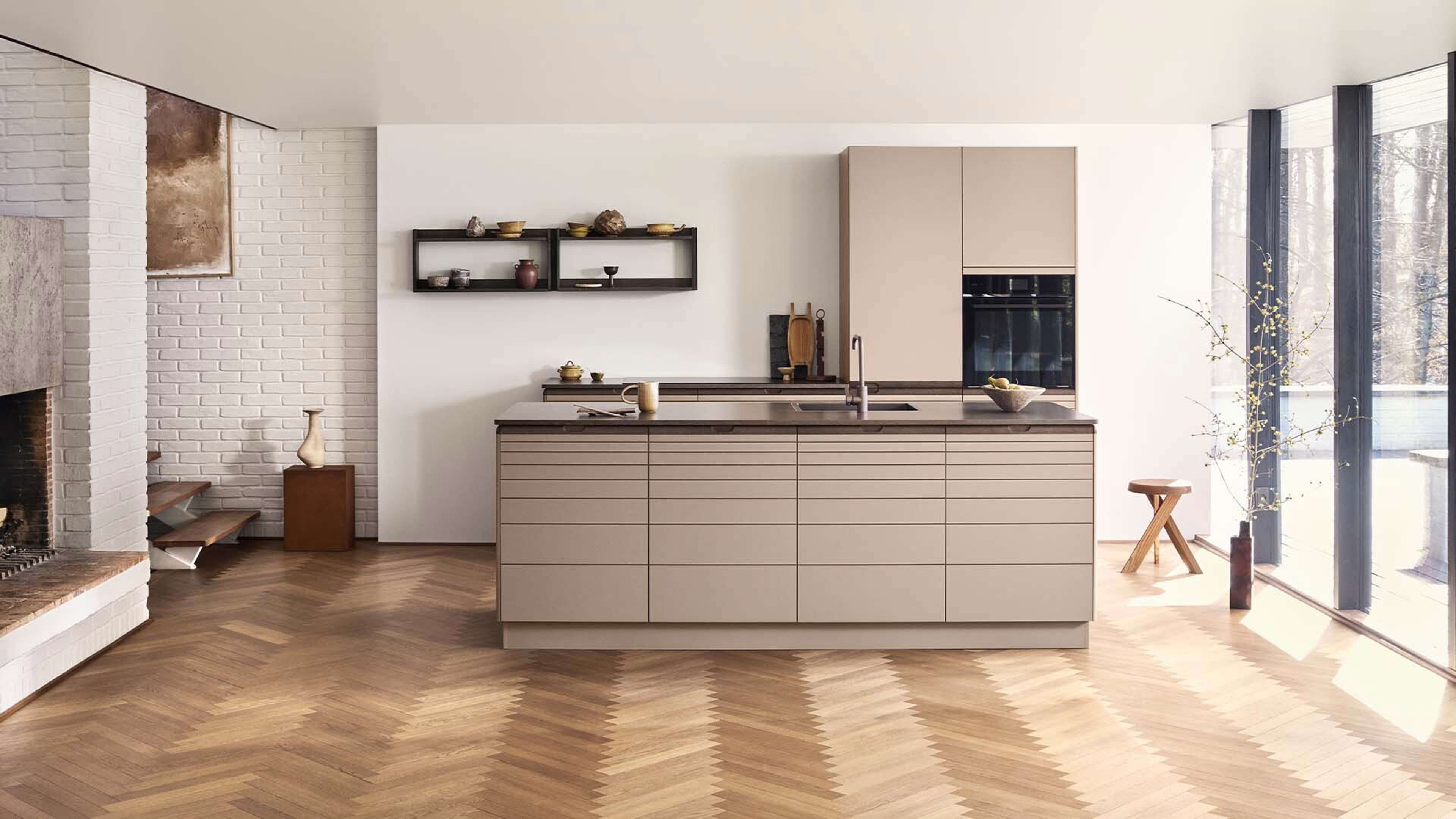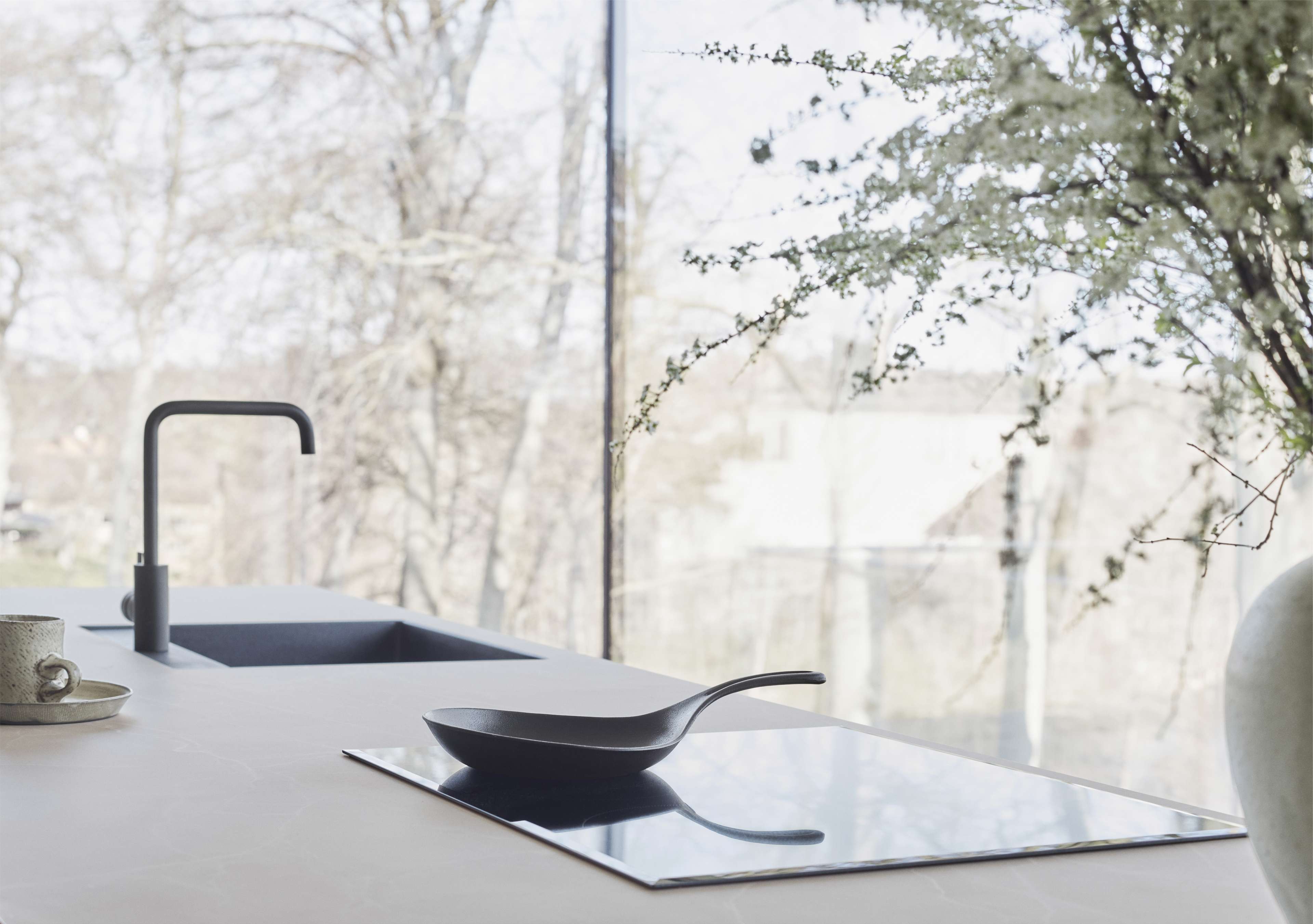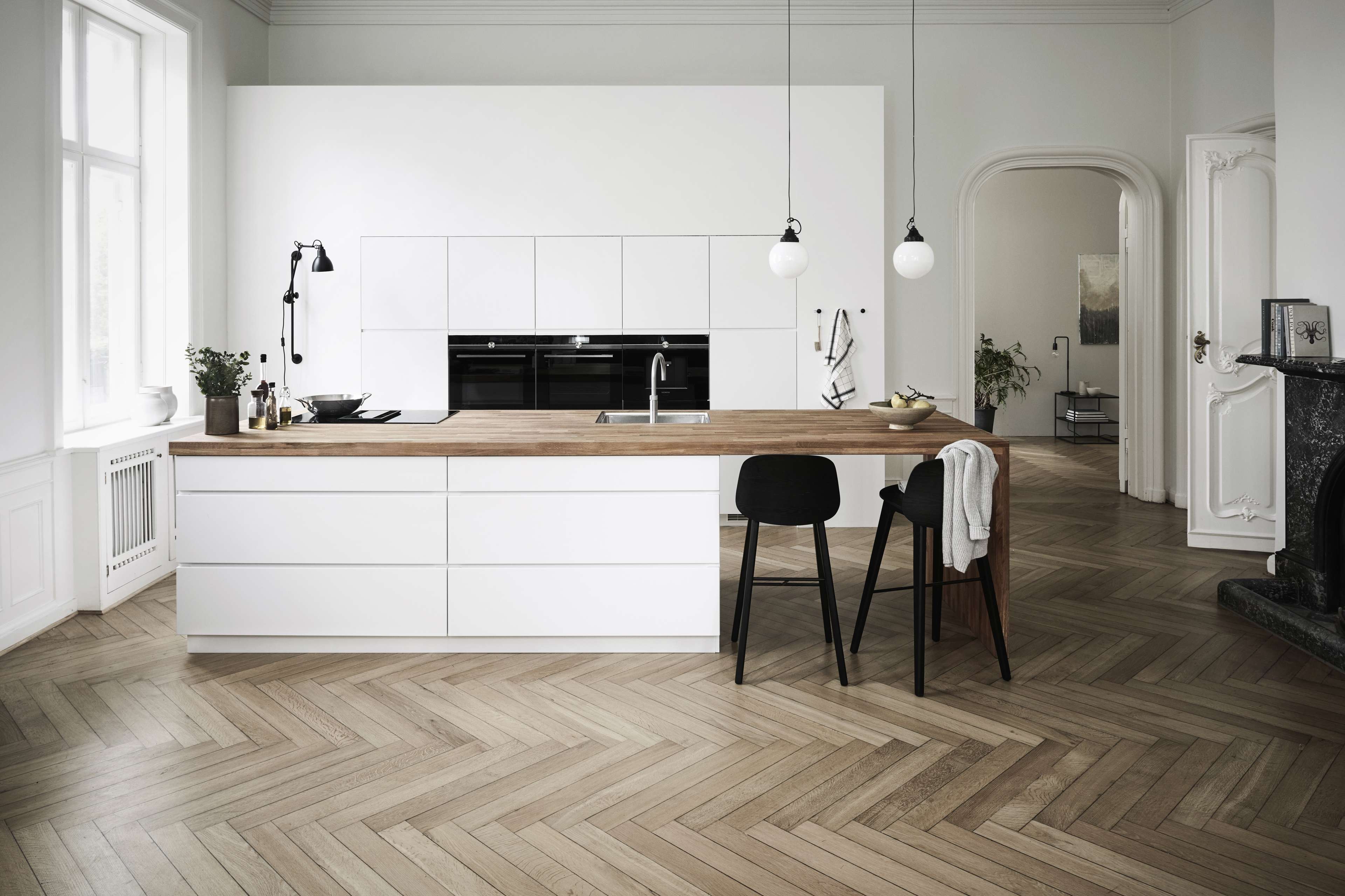Why good kitchen lighting matters
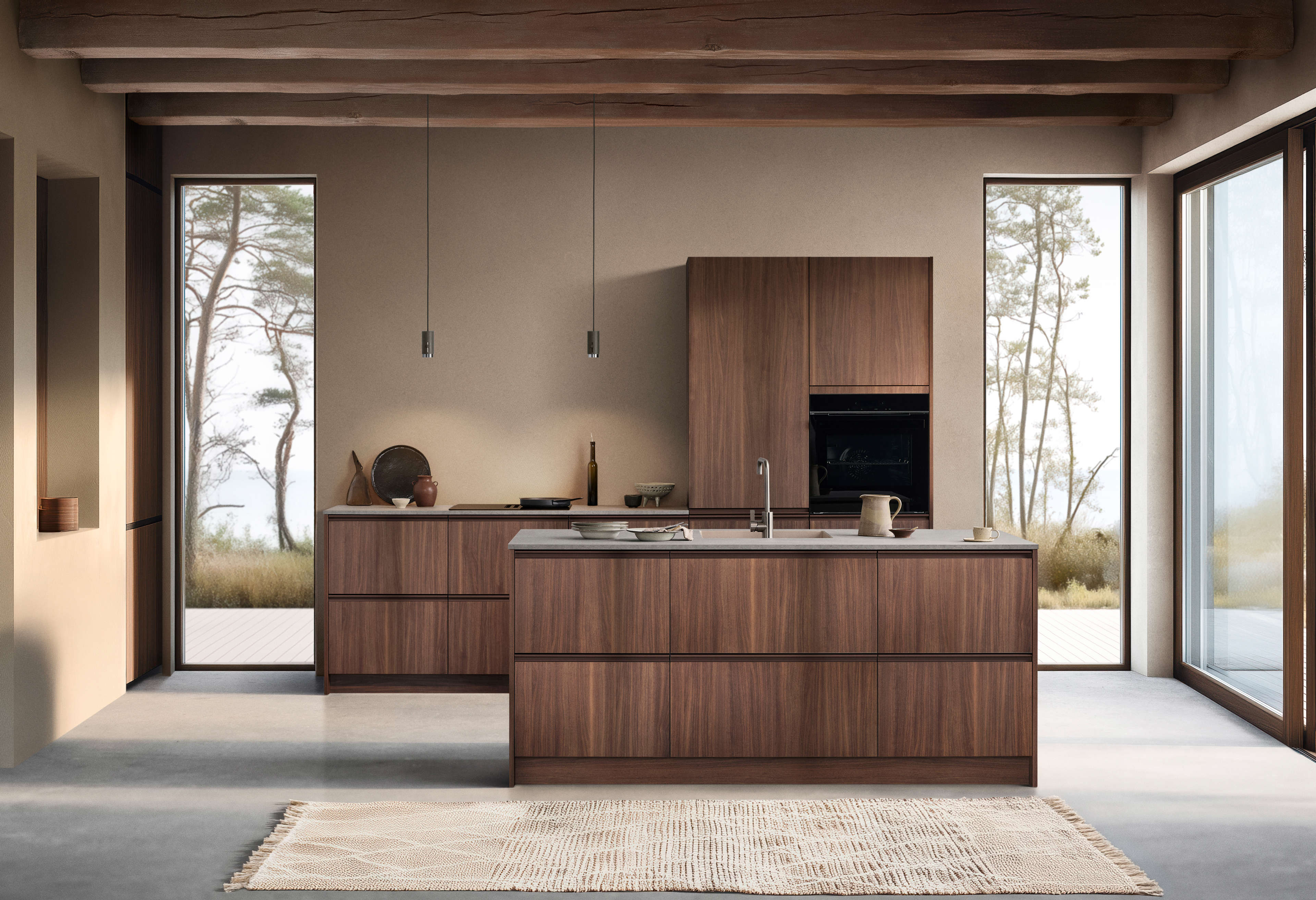
Good lighting shapes everything in your kitchen — how it works, how it feels, and even how its colours appear. The right mix of ambient, task, and accent light highlights materials, creates mood, and brings your design to life. In this guide, you’ll learn how to plan, choose, and place your lighting for the perfect balance of function, comfort, and style.
The kitchen isn’t just for cooking anymore — it’s the heart of the home, where you start your day with a cup of coffee, help with homework, and gather for long dinners that turn into conversations late into the night. It’s a space that needs to shift effortlessly between practical and personal — bright and efficient one moment, soft and atmospheric the next.
Lighting plays a central role in how your kitchen feels and functions. The right setup makes cooking easier, enhances the beauty of your design details, and brings a welcoming warmth to the entire space. In this guide, we’ll show you how to plan lighting that adapts to every purpose — from focused brightness for busy mornings to relaxed, dimmed light for evenings around the table.
Plan lighting around how you use your kitchen
Every kitchen has zones with different needs:
- Working areas — worktops, sink and hob need bright, focused light for clear visibility.
- Ambient areas — dining, seating, open floor space benefit from softer, more diffused light for atmosphere.
Because your kitchen shifts between tasks and social time, flexible lighting is essential. The same island where you chop veggies might host wine and conversation later and your lighting should adjust accordingly.
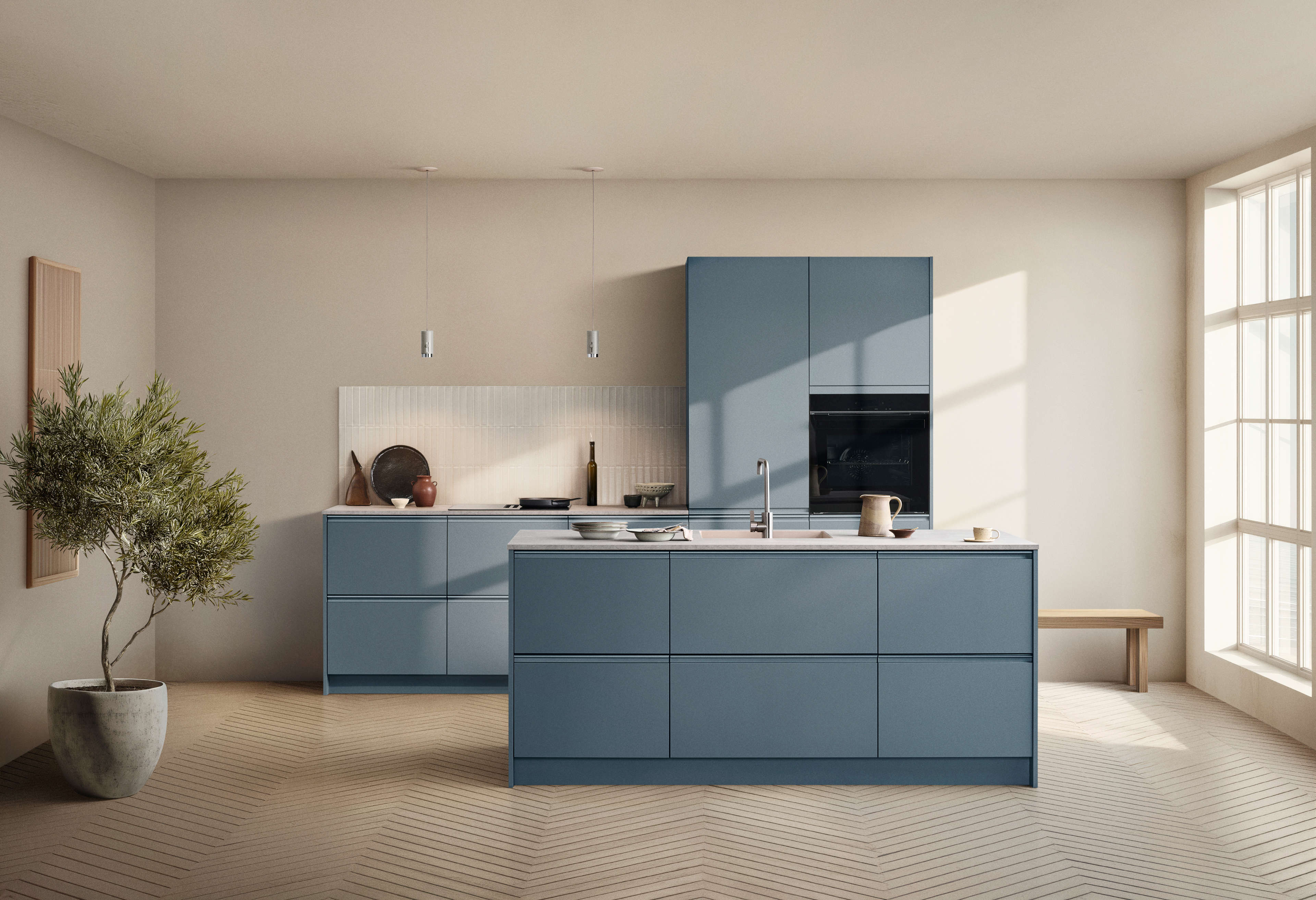
Choose the right sources of light
Each type of light has a role to play.
Ambient lighting
Your overall light source. Ceiling lamps, recessed spots, or track lights give even illumination and remove dark corners.
Task lighting
Focused light for the areas where you work most — under-cabinet lights, wall lamps, or pendants. Pendants are perfect above kitchen islands.
Accent lighting
The layer that adds depth and atmosphere. Think softly lit shelves, integrated cabinet lighting, or plinth lights.
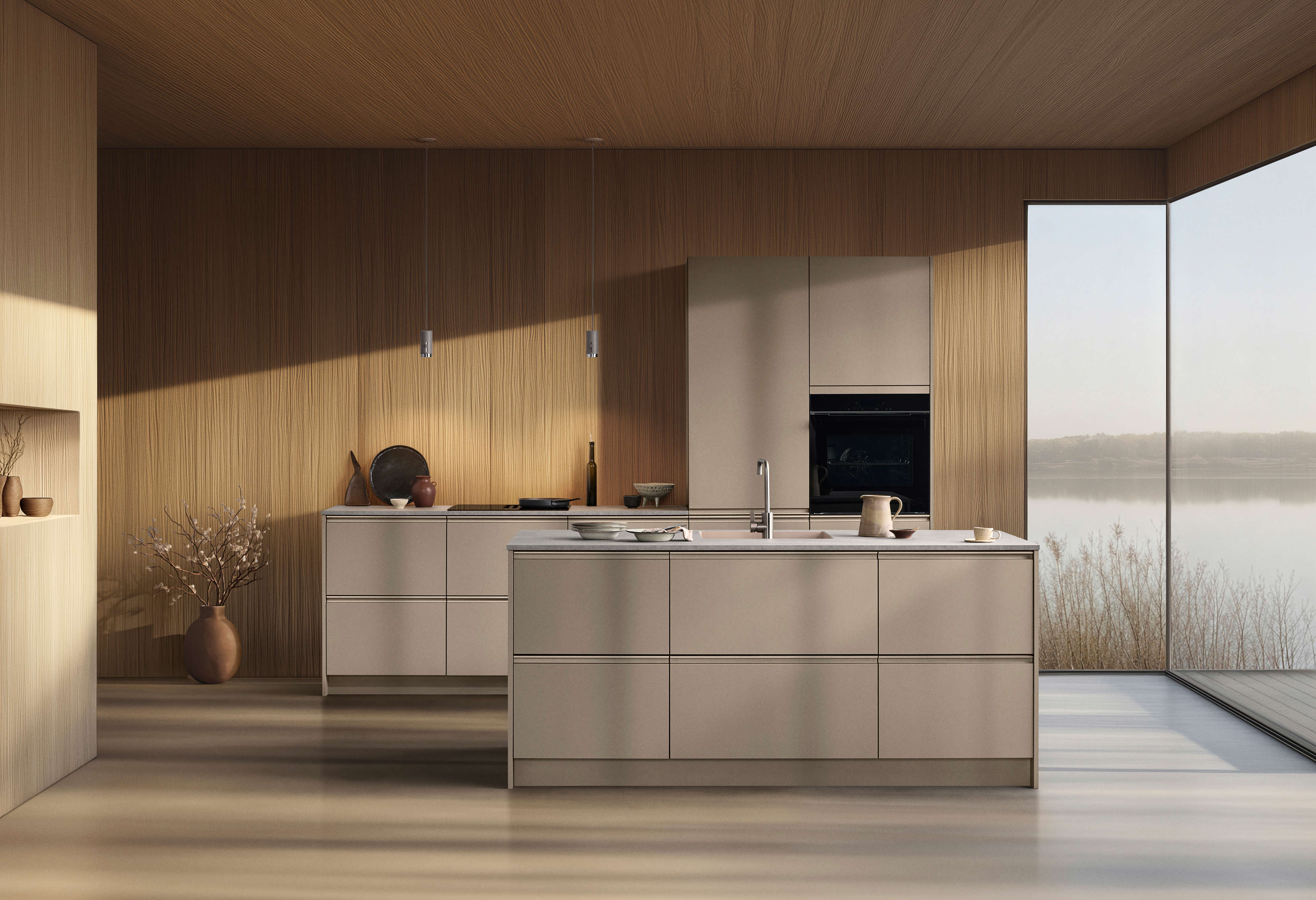
Step 3
How much light do you need?
Light output is measured in lumens (lm). As a rule of thumb:
- Working areas: 600–800 lm / m²
- Ambient areas: 200–300 lm / m²
Example:
A 20 m² kitchen with 3 m² of countertop needs roughly 5,000–7,500 lumens in total.
If your kitchen is dark or daylight is limited, aim for the higher end.
💡 Tip: It’s easier to dim too much light than to add more later.
Lighting depends on the size of your kitchen
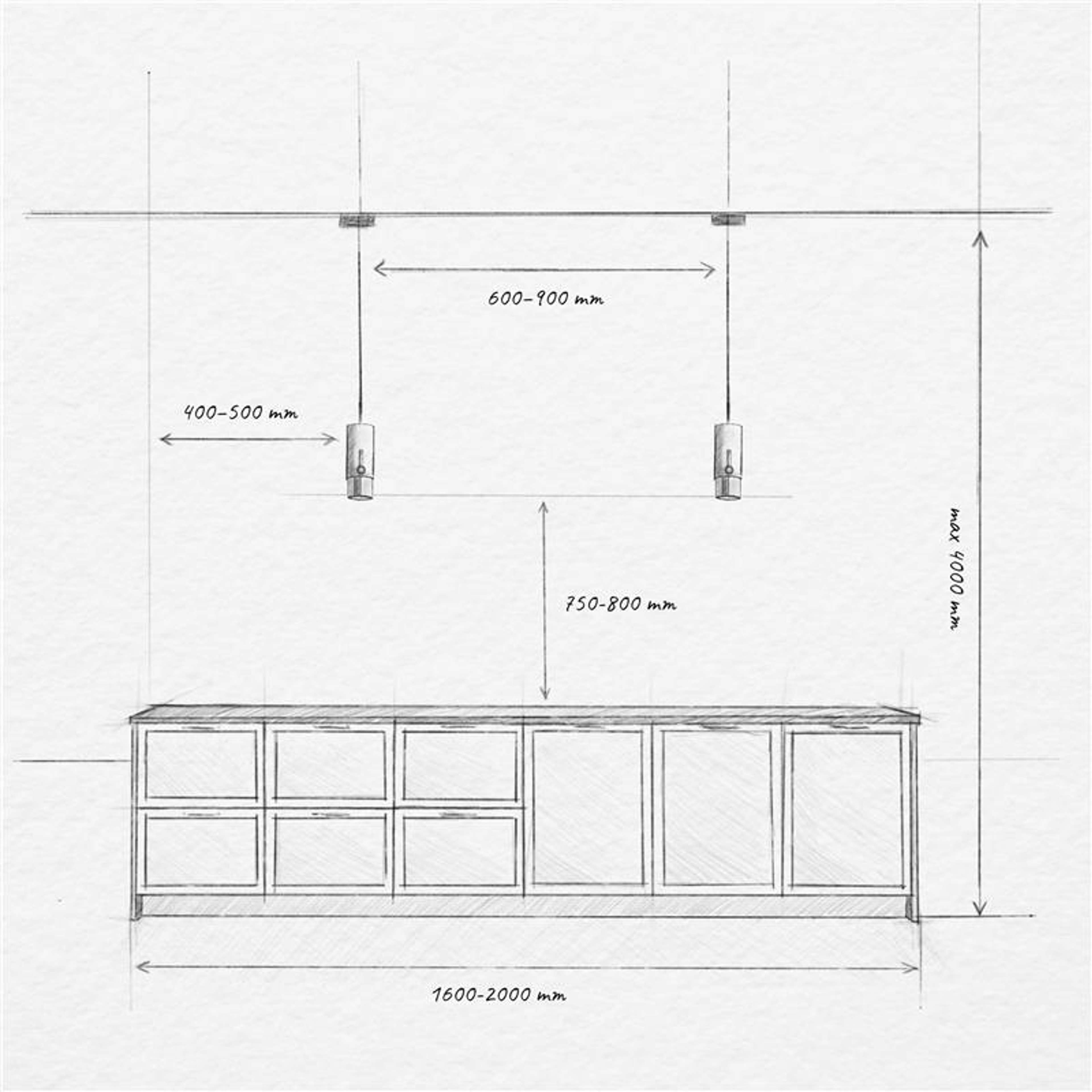
1600 — 2000mm
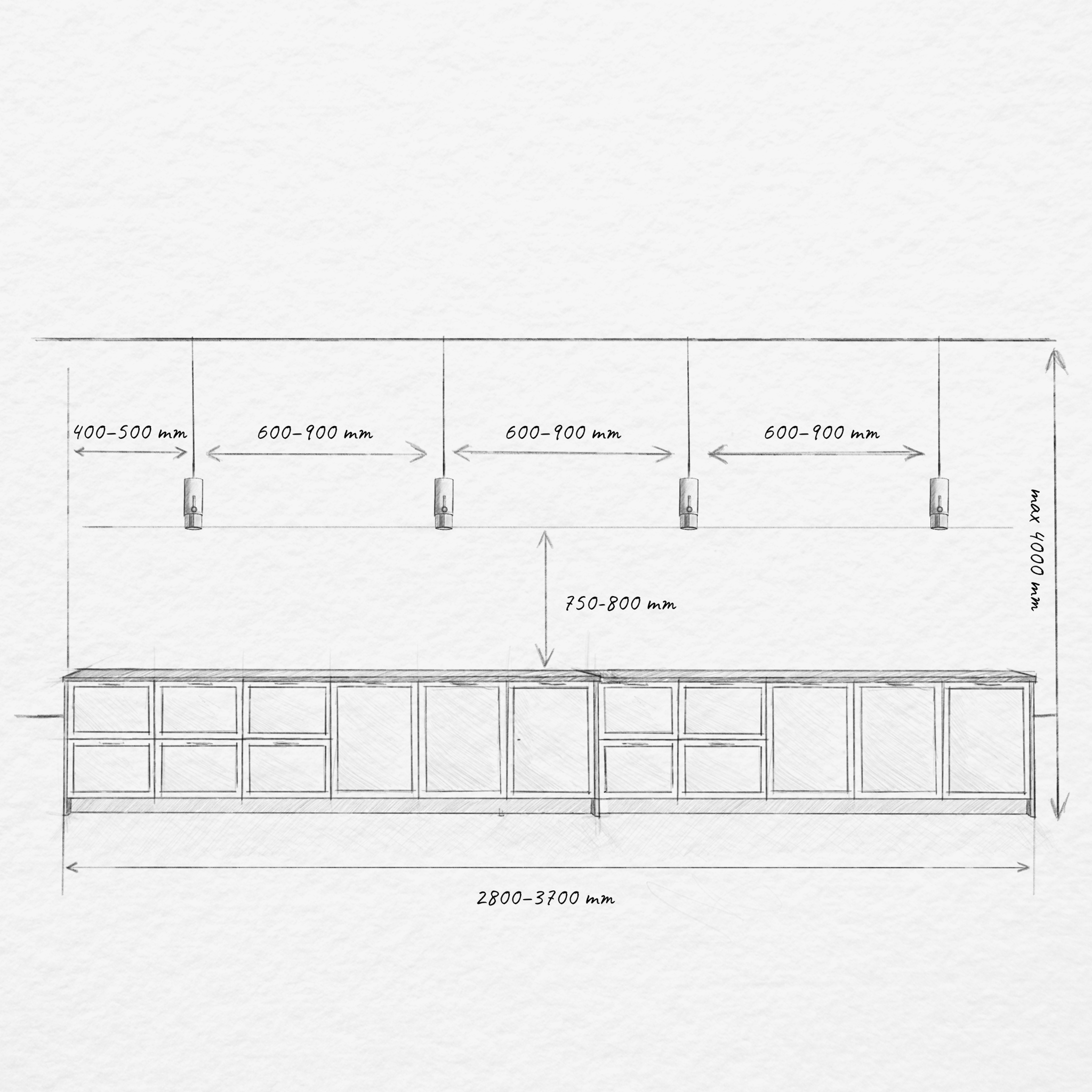
2800 — 3700mm
Get the light quality right
Dimmable lighting
Essential for a multifunctional kitchen. Bright for cooking, low and cosy for dinner.
Colour temperature
Measured in Kelvin (K):
- Around 3,000 K gives natural, slightly warm light — ideal for most kitchens.
- Try 3,000 K for task areas and 2,700 K for ambient zones for balance.
Balance and brightness
- Ambient light: several soft sources (e.g. ceiling spots 350–400 lm).
- Task light: fewer but stronger lights (500–2,000 lm).
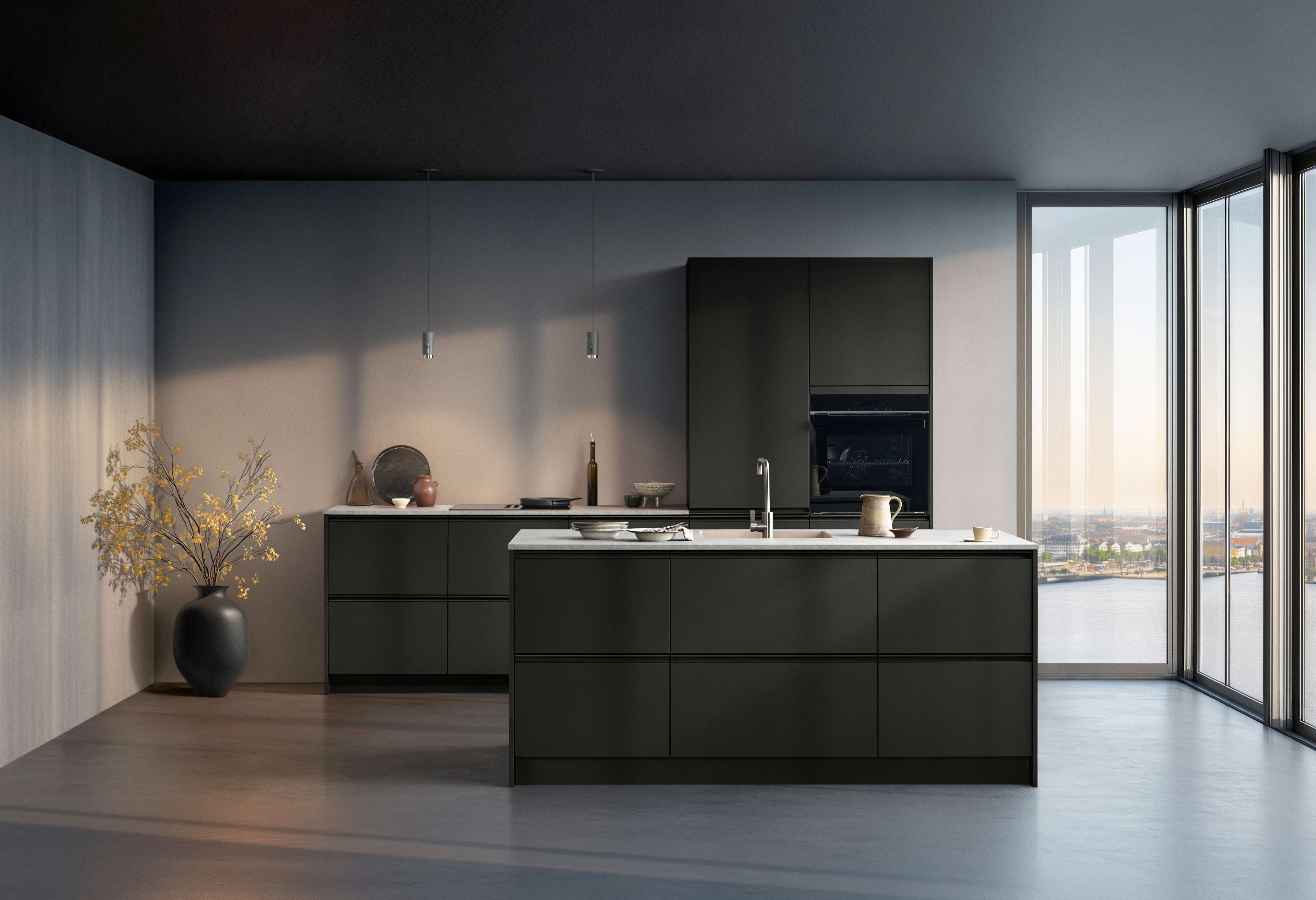
Position your lights for the best effect
Pendant lamps
- Over islands: 75–80 cm above the worktop
- Over tables: 55–65 cm above the tabletop
- Avoid glare by ensuring bulbs aren’t in direct line of sight
- Always choose dimmable bulbs
Ceiling spots
- Distribute evenly to light all zones
- Position to illuminate drawers and floor space, not just counters
- Avoid placing directly above pendants to prevent shadows
💡 Plan ceiling spots early — it’s easier to install extra now than later.
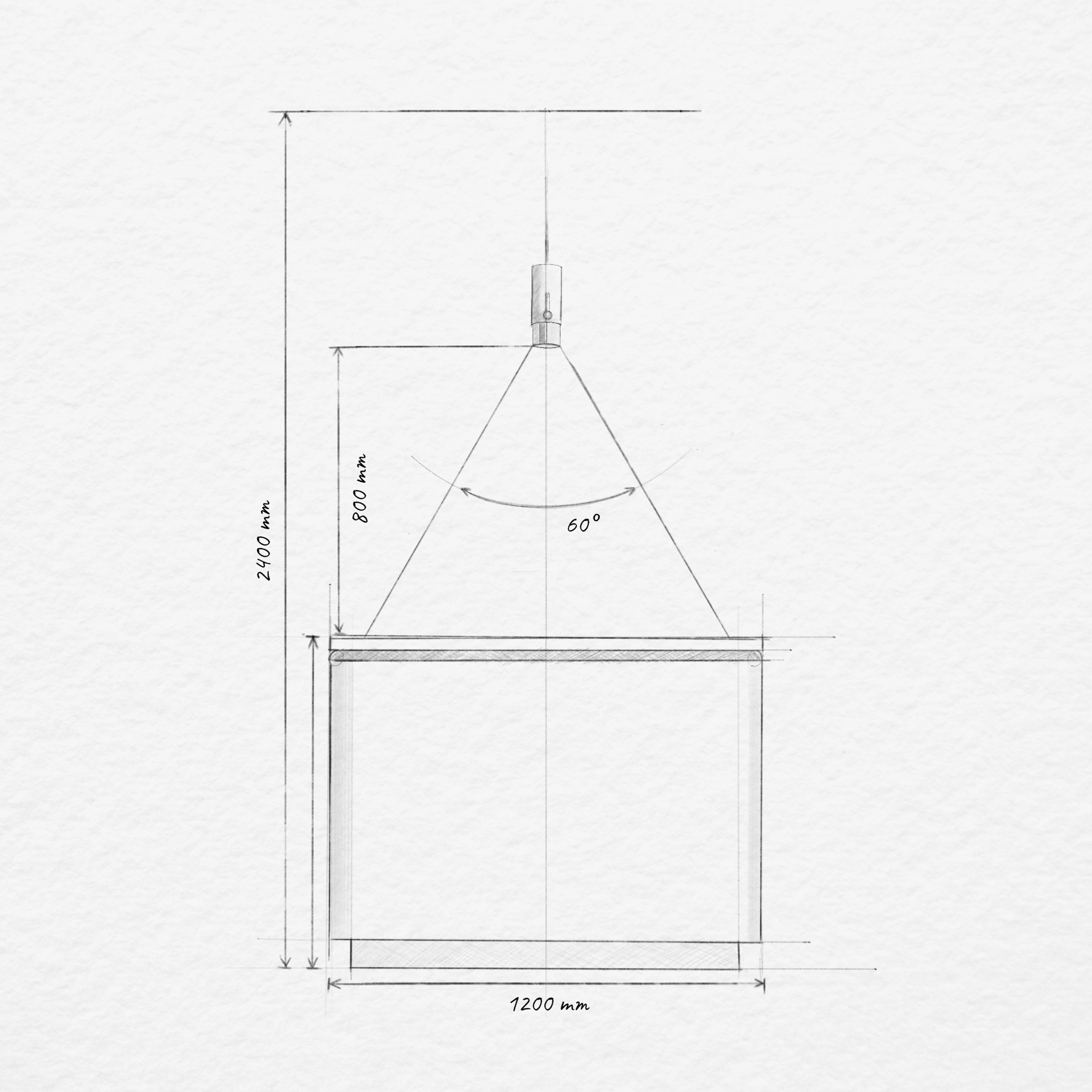
Shop lighting
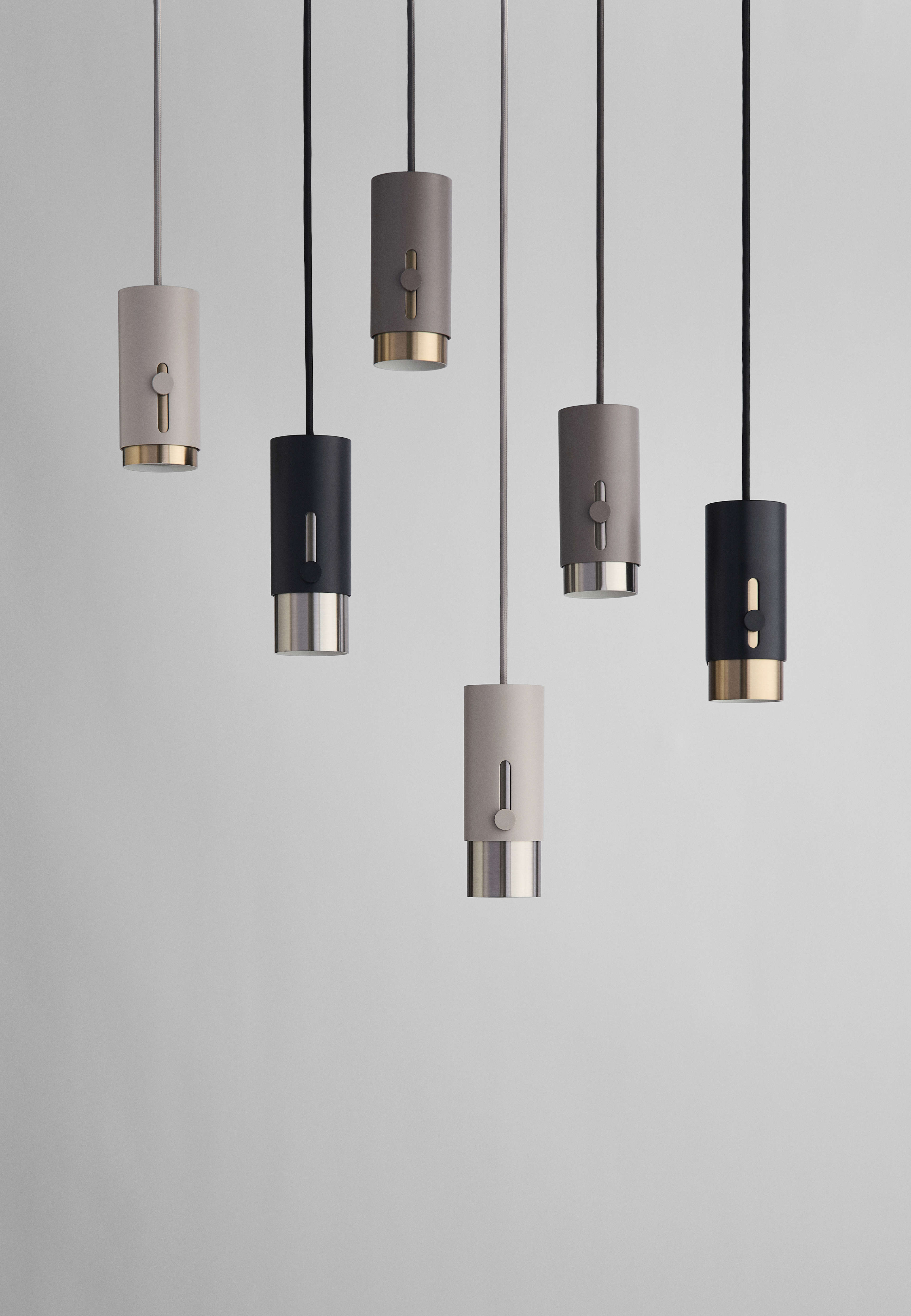
Shop lighting
Get the perfect lighting from Kvik Living.
Let light bring out your kitchen's colour and character
Lighting doesn't just make your kitchen brighter, it reveals its true personality. Every colour and material reacts differently depending on the light around it. Your green kitchen may look light and bright on a sunny day and may tend more to a grey-ish green tone on a cloudy, rainy day.
- Natural daylight shifts throughout the day — soft and cool in the morning, warmer in the evening — subtly changing how your doors, handles and worktops appear-
- Warm artificial light (around 2700 K) deepens earthy tones like oak, beige and terracotta, giving them richness and warmth.
- Cooler light (3000-3500 K) enhances whites, greys and greens for a clean, contemporary feel.
- Directional lighting such as pendants or under-cabinet LEDs highlights texture in woodgrain, brushed metal and matte finishes.
The right lighting doesn’t just help you see your kitchen — it helps you feel it.
💡 Tip: Visit your Kvik store to see how different lighting brings each colour and finish to life — or explore samples at home under various light conditions before deciding. Your Kvik store can provide you with samples to check out in your own home.
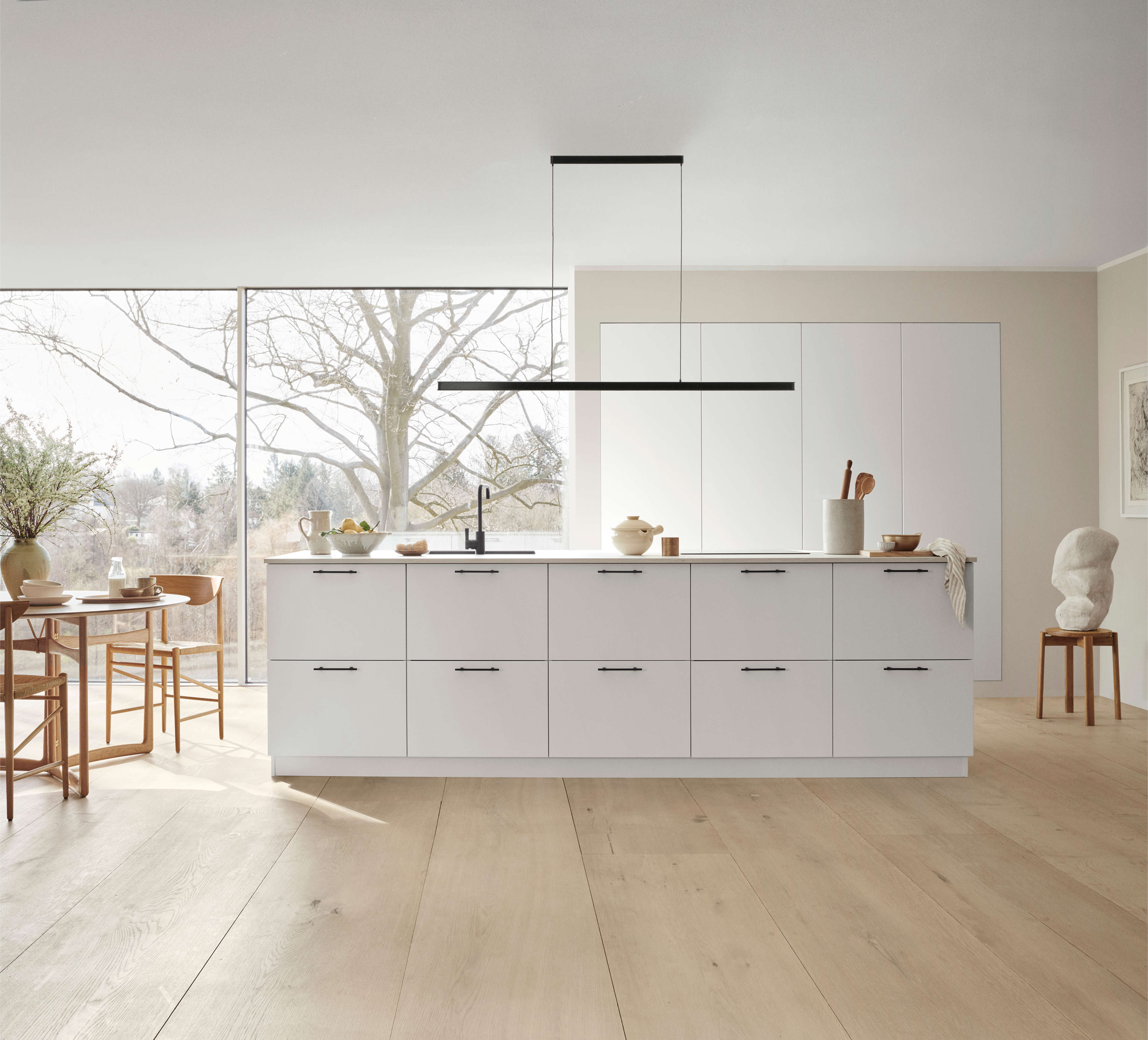
Bringing it all together
To design the perfect lighting scheme:
- Define your working and ambient areas
- Layer ambient, task and accent lighting
- Choose warm, natural tones
- Add dimmers for flexibility
- Let lighting highlight your materials and colours
A well-lit kitchen feels practical by day and atmospheric by night. It’s the finishing touch that turns great design into a place that truly feels like home.
💡 Tip: Try combining soft under-cabinet lights with a Sociable lamp above your worktop — bright when you need it, intimate when you don’t.
